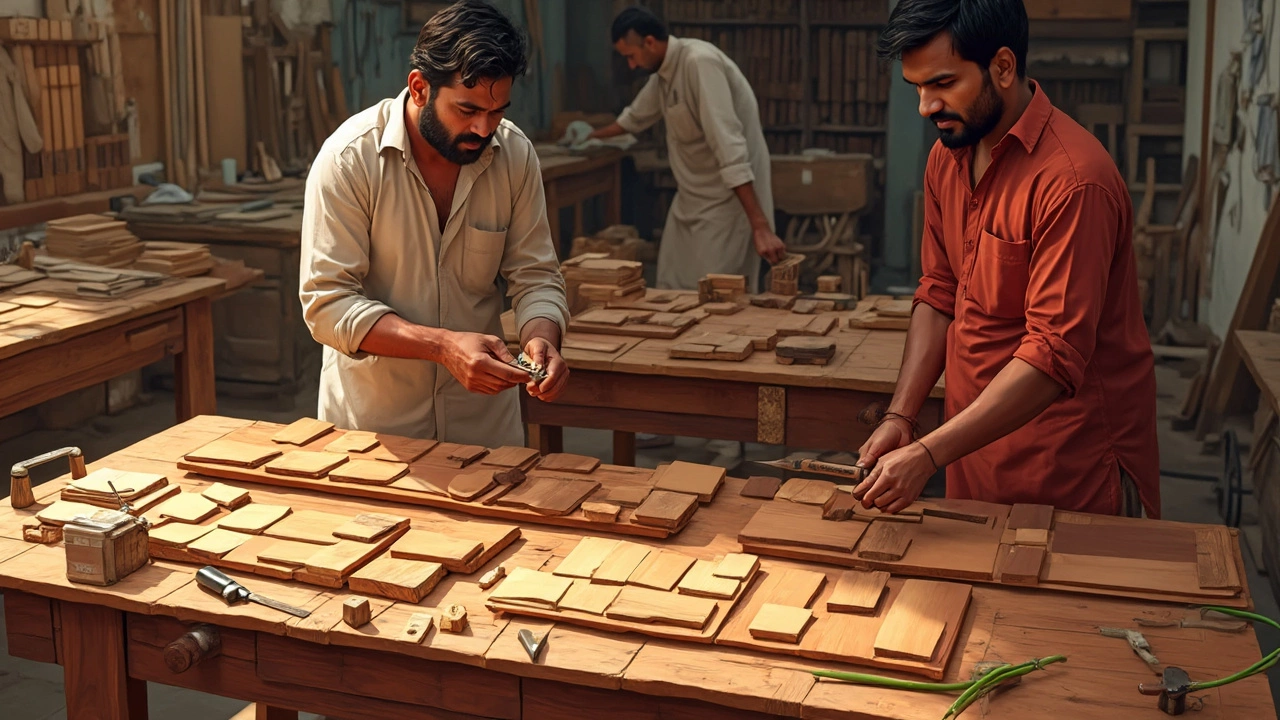Best Wood for Furniture in India: Your Practical Guide
When you pick wood for a sofa, table or cabinet, you want something that looks good, lasts long and fits your budget. India has a lot of timber options, but not all of them behave the same way. This guide breaks down the most popular Indian woods, what they’re good at, and how to decide which one matches your needs.
Top Indian Woods for Furniture
Teak (Tectona grandis) – Teak tops most lists because it’s naturally oily, strong and resists water. That’s why you see it in outdoor chairs and high‑end indoor pieces. It’s pricey, but a well‑finished teak table can stay beautiful for decades.
Sheesham (Indian Rosewood) – Sheesham is a favorite for traditional Indian furniture. It has a warm amber tone and grain that takes a nice polish. It’s harder than mango but softer than teak, so it handles screws and joinery well. Prices sit in the mid‑range.
Mango wood – When mango trees are harvested after fruiting, the wood becomes a cheap, light‑weight option. It’s easy to work with, takes stains nicely, and is ideal for casual furniture like coffee tables or shelves. It’s not as dense as teak, so it can dent if you’re rough with it.
Sal (Shorea robusta) – Sal is very dense and strong, making it great for heavy‑duty pieces like beds or door frames. It has a deep reddish‑brown color that darkens over time. Because it’s heavy, handling and transport can be a challenge.
Acacia – Acacia grows fast and offers a good strength‑to‑weight ratio. Its grain is straight, and it finishes well with both oil and varnish. It’s a solid choice for modern, minimalist designs without breaking the bank.
How to Pick the Right Wood for Your Project
Start with the furniture’s purpose. Outdoor or bathroom pieces need water‑resistant wood like teak or seasoned sheesham. For indoor items that won’t see heavy wear, mango or acacia can save money.
Next, think about weight. If you need to move a piece often, lighter wood such as mango or acacia is easier to handle. Heavy woods like sal give a solid feel but may need extra help during installation.
Budget matters too. Teak commands the highest price, followed by sheesham and sal. Mango and acacia are the most affordable, especially when sourced locally.Check the finish you want. Some woods, like teak, already have a golden hue; others need a clear coat to show off grain. If you plan to stain, pick a wood that accepts color evenly – sheesham and mango work well here.
Lastly, consider sustainability. Look for certified sources or reclaimed timber. Many suppliers now label wood with FSC or similar certifications, making it easier to choose responsibly.
Putting it all together, match the wood’s strength, look, weight and price to the piece you’re building. A solid piece of teak for a patio set, a sheesham table for a dining room, or a mango shelf for a home office – each choice makes sense when you weigh the factors.
Now you have a quick cheat‑sheet to decide which Indian wood fits your furniture project. Grab a sample, feel the grain, and go ahead with confidence.

Best Tree for Furniture in India: A Practical Guide
Trying to figure out which tree makes the best furniture in India can get confusing with so many choices on the market. This guide breaks down the most popular types of wood used by Indian furniture makers, giving you practical info on their strengths, looks, and pricing. You'll learn what really matters when picking wood, plus pro tips to get sturdy, lasting pieces. If you want quality furniture or just want your next table to last more than a few years, this article gets you sorted. No confusing jargon—just facts, tips, and straight talk.
Read More